
The Arlington County Board could approve a new sewer plan for the first time in 22 years tomorrow (Saturday).
The proposed Sanitary Sewer Collection System Plan is designed to prepare the county for continued growth through 2045. Despite the surge in development planned for the county over the next two decades, the plan does not call for expanding Arlington’s current sewer infrastructure.
Instead, according to a county report, the most substantial change would be an increase in how often the county cleans out small-diameter sanitary sewers. Flushing pipes of 12 inches in diameter and less every five years would cost $330,000 annually, increasing the average household’s water bill by about $2.11 each year.
The Arlington County Board is scheduled to vote on the proposed plan at a meeting tomorrow morning.
The reason the county does not need more sewer lines, according to a staff presentation to the Planning Commission last week, is that plumbing fixtures and appliances have become more efficient over time. Every day, Arlington uses about 5 million gallons of water less than when the county approved the current sewer plan in 2002.
This is despite the fact that the county has about 46,000 more residents than it did 22 years ago.
“The trends are going the right way,” Planning Commissioner James Lantelme said last week. “We’re using less water.”
Population growth between now and 2045 is expected to increase Arlington’s water usage by about 27%, or 6 million gallons per day, according to the presentation. This is still less than the county used in the late 1990s.

At about 20 million gallons per day, the county currently uses about as much water as it did in the 1960s, when it had 73,000 fewer people.
“Adding additional neighbors to our county is something that we can support,” Lantelme said. “Our infrastructure is robust enough that we can add all these people comfortably and safely.”
Arlington’s water-use projections contrast with allegations from some residents that the county lacks the infrastructure to keep up with projected growth. For instance, a lawsuit filed last April claims that the county violated state law in passing its Missing Middle zoning code changes without fully considering possible impacts on infrastructure, including sewer systems.
In March 2023, the Arlington County Board approved changes to the zoning code allowing up to 6-unit dwellings on lots previously zoned only for single-family homes. The Board also approved a set of limitations intended to control the pace and impact of development, including parking minimums, permit caps and tree planting requirements.
But Arlington Neighbors for Neighborhoods, a group that issued a press release on behalf of the plaintiffs, claims that was not enough.
“State law requires that zoning ordinances consider needs for transportation, schools, parks, recreation, and public spaces, as well as the conservation of natural resources,” the statement said. “The law also requires consideration of a locality’s comprehensive plan, which addresses stormwater, sanitary sewer, water distribution and more.”
While the revised sewer plan does not recommend expanding current infrastructure, it calls for continued improvement projects such as relining the county’s existing pipes, many of which are between 75 and 100 years old. The county has been working on relining projects for a number of years and so far has relined 58% of the sanitary sewer system, according to the county report.
Photo (top) via Arlington Dept. of Environmental Services/Flickr

A proposed county contract aims to incentivize Arlington residents to resume buying as many solar panels as they once did.
The Arlington County Board on Saturday is set to consider whether to approve an agreement with Solar United Neighbors (SUN), which runs the Capital Area Solar Switch program, a co-op that provides financial incentives to people who buy solar panels from local vendors.
A county report argues that the county’s failure to enter into such an agreement last year caused a precipitous drop in solar installations.
“Until 2023, Arlington County was first, regionally and supra-regionally, in program performance,” the report says, noting that 401 residents registered for Solar Switch in 2022 and 26% had panels installed.
That all changed last year after SUN asked participating counties to enter into memorandums of understanding with the company, pledging to work with SUN to conduct public outreach about the program.
“Absent a full MOU, SUN advised that its ability to provide full outreach, marketing, and promotional services would be limited,” the report says. “In 2023, execution of an MOU with SUN did not occur.”
This had consequences for Arlington.
While program registrations surged in Maryland’s Montgomery and Frederick counties, which signed MOUs with the company, Arlington’s numbers slumped. Just 148 residents registered for the co-op last year — and of these, only 11, or 7%, went through with actually installing solar panels.
“Arlington County’s active participation with SUN’s annual solar co-op ‘Capital Area Solar Switch’ directly impacts the resulting number of rooftop PV solar that is installed on residential roofs in the County each year,” the report says. “In 2023, however, the marketing, outreach and promotional support to the County from SUN was [minimal]… While the County conducted promotions to educate residents and promote the solar co-op, SUN focused its time and resources where MOUs were in place and diverted their services and resources to those jurisdictions.”
Under the proposed memorandum of understanding, the county would agree to provide information about Solar Switch on its website, in blog posts and on its newsletter. The county would also agree to share social media posts, help with a “public launch” of the program and allow the company to use the county logo on some materials.
The contract notes that this is not a joint venture but rather, “an agreement between the Parties with the goal of furthering their respective missions.” The agreement would expire Dec. 31 unless the parties extended it.
Arlington’s Community Energy Plan seeks to have all of the county’s electricity come from renewable sources by 2035, with the goal of becoming fully carbon neutral by 2050.
That effort will require more significant buy-in from residents, advocates say, as all Arlington County operations have relied on renewable energy since early 2023. More than 80% of that power comes from offsets generated by the Arlington-Amazon solar panel farm in Pittsylvania County, which opened in 2022.
Photo via Arlington DES/Flickr
State-funded safety improvements to the Mount Vernon Trail are one step closer to getting underway.
The Arlington County Board is set to review on Saturday a memorandum of agreement with the Virginia Department of Transportation, the National Park Service and the Federal Highway Administration governing the roles of the respective agencies throughout the project.
Some five miles of trail between Rosslyn and Tide Lock Park in Alexandria are set to be widened so that users have 5.5 feet of space in each direction, as opposed to the current 3.5 feet. One bridge near Theodore Roosevelt Island, the infamous wood plank Trollheim Bridge, and two bridges in Alexandria will also be rebuilt and widened.
Lastly, the S-curve at Daingerfield Island and four intersections — near Theodore Roosevelt Island and the Humpback Bridge, Crystal City connector and Four Mile Run trails — will be realigned to reduce conflicts. Construction is set to start in the 2026-27 fiscal year.
Four years ago this May, NPS, which administers the Mount Vernon Trail, released a study detailing its current conditions and recommending substantial upgrades. The study found that pedestrian and cyclist conflicts are significant along narrow and congested portions of the trail through Arlington County, particularly near Rosslyn and Crystal City.
The study also determined the intersection with the Four Mile Run Trail has high crash potential and recommended straightening the sharp S-curve at Daingerfield Island.
A few months later, the Arlington County Board gave the green light to apply for state funding for some these recommended upgrades. In 2021, the state awarded the project $29 million from its discretionary transportation capital funding program.
NPS will chip in $4 million to cover the difference between estimated project costs and the state’s allocation and will cover any budget overages. Already, it has conducted public engagement on the project and will continue to do so as the project progresses through the conclusion of design and into construction, the county report says.
The agreement set for review this weekend must be approved for NPS to access the funding, according to the county.
As part of the agreement, Arlington County will appoint a project manager tasked with making sure the project stays within the scope of what the state approved. The county will also approve the final designs, which are nearly 30% complete so far.
Additionally, the County Board will review a separate agreement that includes Alexandria, pertaining to the trail portions that fall within its city limits.
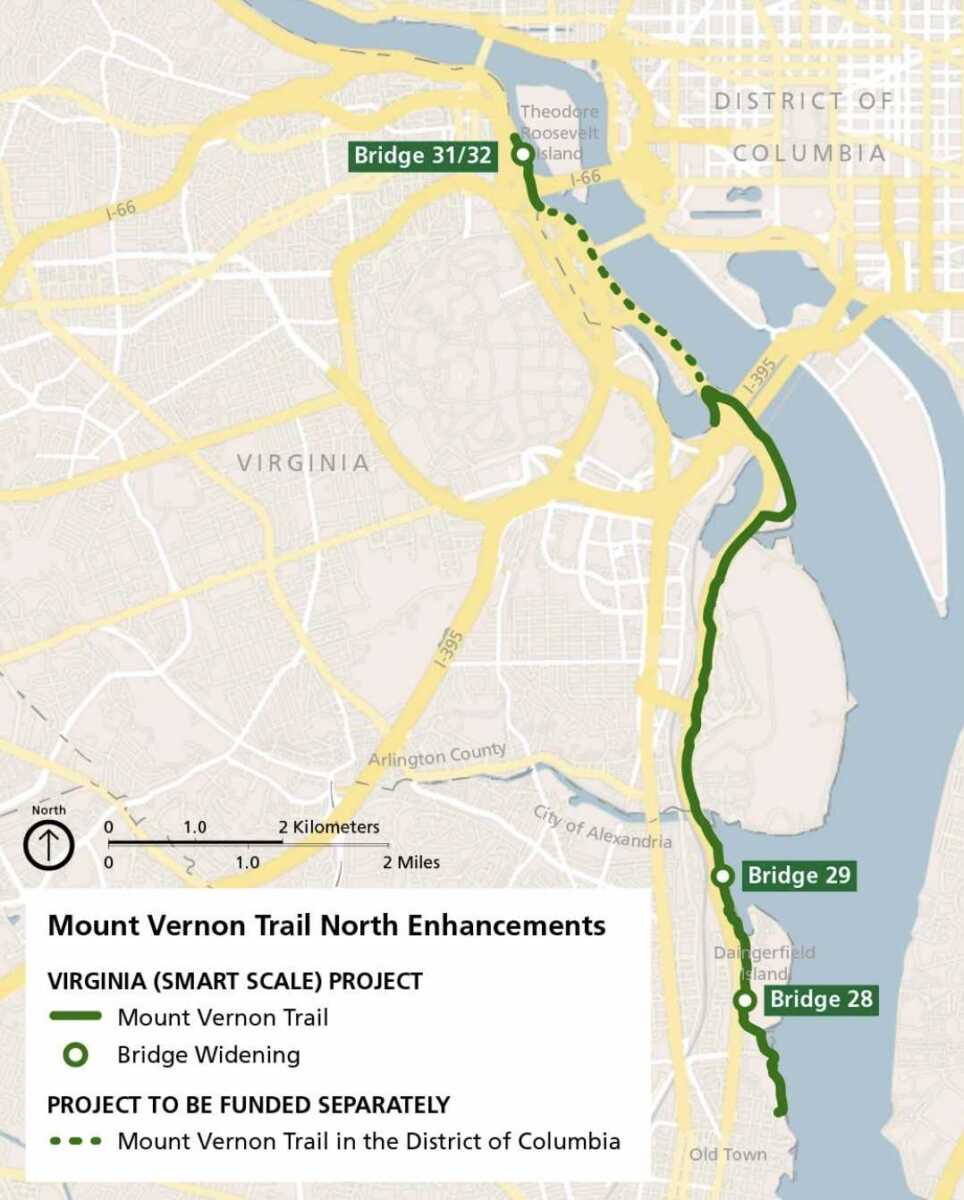
(Updated at 12:30 p.m.) Arlington County is home to one of the busiest Goodwill donation centers in the country and this location, on S. Glebe Road, is now being teed up for redevelopment.
Last week, Planning Commission members recommended the Arlington County Board approve plans from Goodwill and affordable housing partner AHC to redevelop its storefront with a 6-story building consisting of a new retail and donation center, 128 units of affordable housing and space for a child care center.
The Board is set to review the proposal — which includes requests to rezone the property and label it a “revitalization area,” a designation intended to boost AHC’s application for low-income housing tax credits — on Saturday.
Still, some criticism over pedestrian safety for elderly residents and children tempered that enthusiasm, as did questions to affordable housing partner AHC Inc. about its ability to manage an affordable community following livability issues residents and advocates revealed at the Serrano Apartments on Columbia Pike.
“There’s just so much to love about this project,” said Planning Commissioner Leo Sarli. “We cannot have enough housing… childcare or upcycling — which is what Goodwill does — which again, keeps things out of landfill and has a massive environmental impact.”
Despite all this, he had lingering pedestrian safety concerns around the site entrance, given all the foot and vehicular traffic that apartments, retail and childcare are expected to generate. This led him to propose that the Planning Commission recommend the County Board defer its approval until Goodwill addresses them. While other commissioners likewise stressed their pedestrian safety concerns, his motion failed 9-1, with one abstention.
They later supported a resolution from Vice-Chair (and Arlington County Board candidate) Tenley Peterson to recommend county staff continue to work with the applicant to design streets around the building that use “pedestrian-forward design practices.”
“We don’t want to let the perfect be the enemy of the good,” she said. “This project offers so much value to the community.”
Land use attorney Andrew Painter said the proposal actually improves pedestrian safety by separating donor, resident and retail traffic, reducing surface parking from 54 spaces to four accessible ones and closing one of two existing site entrances.
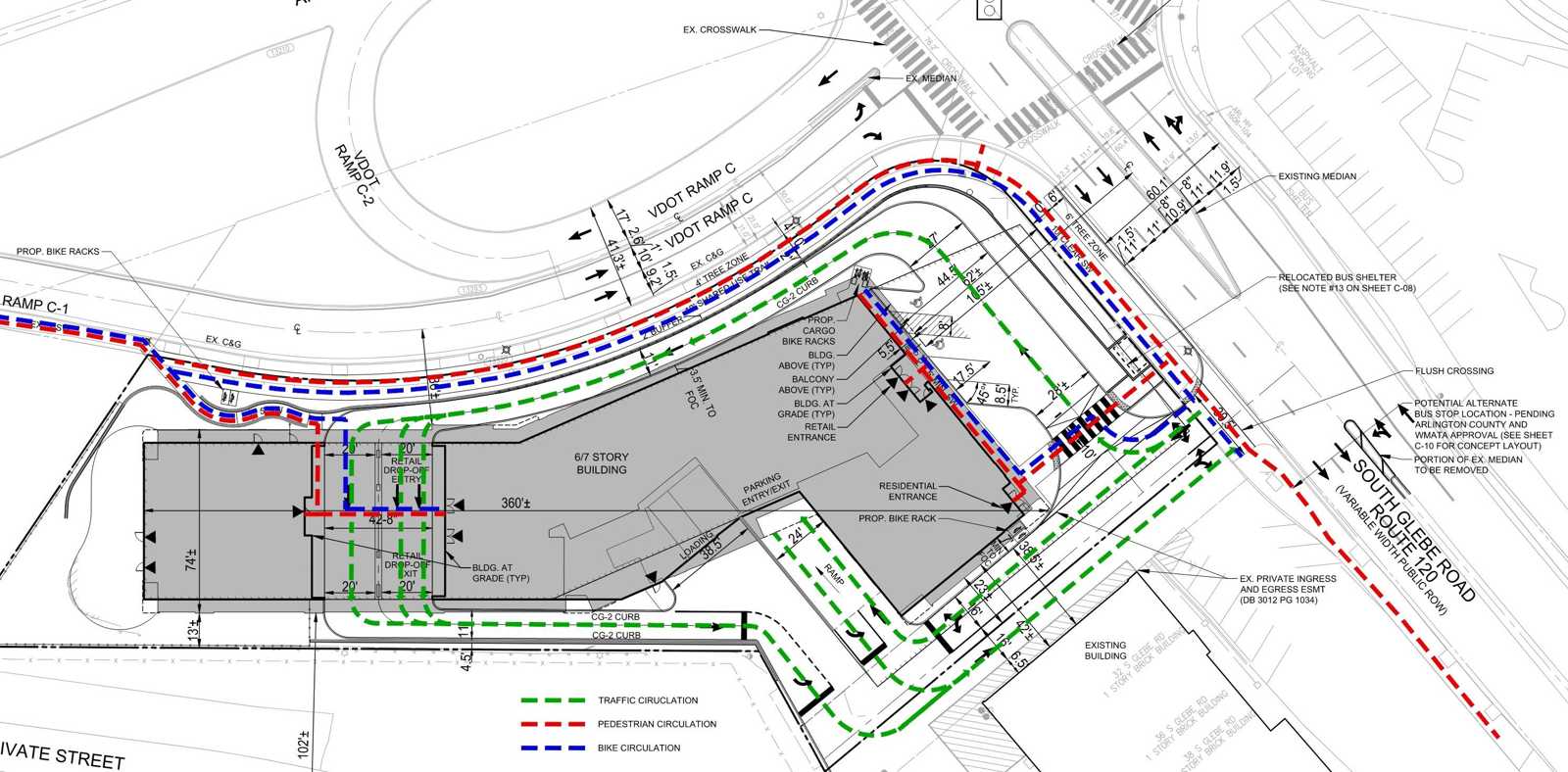
County staffer Kevin Lam, meanwhile, assured Planning Commissioner members that transportation staff thoroughly reviewed the proposal and do not believe the site poses a significant safety issue, though it is a “conflict point between pedestrians and vehicles.”
Like Peterson, the Transportation Commission approved the project, though several had pedestrian safety concerns. Chair Chris Slatt said commissioners hope these are addressed post-approval and commended Goodwill for transportation upgrades it has committed to, including one-way parking access, fewer surface parking spaces and a wider, raised sidewalk across the driveway.
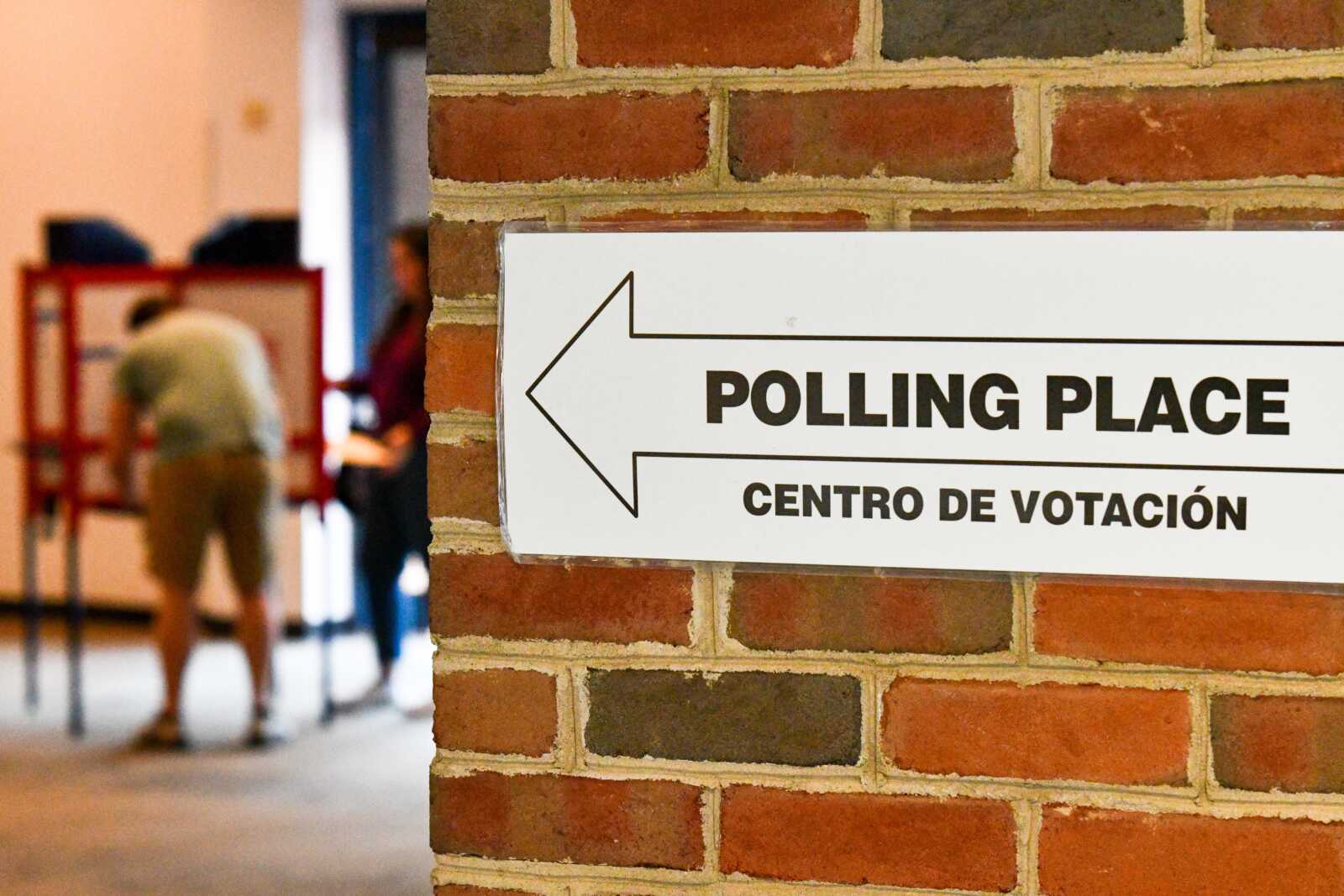
With ranked-choice voting now the go-to method for local primaries in Arlington, the County Board is also considering using it for the November general election.
This Saturday, the Board plans to hold a public hearing to decide whether to use the voting method, also known as RCV, in the County Board election this fall to fill Chair Libby Garvey’s soon-to-be-vacant seat — the only one expected to be empty.
Five candidates are currently vying for Garvey’s seat, including first-time candidate and Planning Commissioner Tenley Peterson, second-time candidates J.D. Spain, Sr. and Natalie Roy, first-time candidate Julie Farnam, and former State Senate candidate James DeVita. To win the nomination, a candidate must get a 51% majority.
A county report argues that using RCV in November will allow the Board to assess how well the new electoral system is received and decide on its potential expansion in future general elections.
If adopted, RCV — a process in which voters rank candidates by preference — would not apply if more than one County Board seat is up for grabs. More time is needed to introduce, clarify and debate RCV as an election method for two or more open seats, the report says
Arlington County piloted RCV in last year’s primary after a 2022 survey showed majority support among residents. The Virginia General Assembly approved a measure in 2020 that allows localities to adopt RCV for elections to a county board, board of supervisors or city council.
In December, the Board endorsed ranked-choice voting as the default for Arlington’s primary elections.
Despite positive feedback from voters about the new system during the June 2023 primary, the Board chose not to use it for the 2023 general election. Members cited concerns over the quality of outreach to voters about the new system, particularly among communities of color, renters and young people.
The county plans to use its current voting machines for the County Board primary this June, but has allocated $2 million in the 2025 budget for new machines capable of handling more than three ranked-choice options.
(Updated at 12:35 p.m.) Even in the era of Missing Middle, some duplex projects in Arlington have to go to the Arlington County Board for approval.
A proposal to build two side-by-side homes for sale at 1129 N. Utah Street, a few blocks from the Ballston Metro station and Washington-Liberty High School, is one such project.
Although the 2-story, single-family home set for demolition is in a “townhouse district,” only a single-family home can be built by right. McLean-based developer BeaconCrest Homes must go through the county’s longer, more intensive review process — typically reserved for larger-scale projects — to obtain approval for its proposed semi-detached home. It will have two 4-bedroom, 4.5-bath homes, each 2,600 square feet, with private outdoor spaces and 2-car garages.
“Given the property’s location and immediate surrounding uses, we felt it deserved to be more than a single dwelling and chose to pursue the 2-unit, semi-detached route,” said BeaconCrest representative Derek Huetinck. “Wrapping up, we continue to believe that the project before the Planning Commission is a better fit for the neighborhood, and more closely aligned with the county’s housing needs than the by-right option.”
It is a quirk that may come down to how the neighborhood and county zoning codes developed.
The brick home at 1129 N. Utah Street was built in 1948. While the first mention of “townhouse dwelling districts” appears to be Arlington’s 1969 Zoning Ordinance, it was not until the 2002 ordinance that the designation “R15-30T” — the type of townhouse dwelling district this home finds itself in — entered the code.
The 2002 code says this new district responds to the need for more transit-oriented development. Still, the code requires site plan approval by the County Board for 2-unit semi-detached homes and 3-unit townhouses, meaning these was never a by-right option, though the district’s name suggests a preference for this housing.
Today, several townhouses, along with some 3-story apartment buildings, line N. Utah Street, except for the “hold out” property in question, as Planning Commissioner Daniel Weir described it last week.

Now that property owners can build 2-6 unit homes by right in what were once single-family-home-only districts, the added hoops in a townhouse district — unchanged by the Missing Middle ordinance — prompted staff and the Planning Commission to give the N. Utah Street project an abridged process, with targeted outreach to immediate neighbors and more informal meetings.
The developer worked with neighbors who had critiques regarding the façade, which BeaconCrest worked to address, per a county report. Only one person, the president of the Ballston-Virginia Square Civic Association, expressed concerns about the shortened process.
Last week, Planning Commissioner Jim Lantelme lobbied for zoning code revisions to streamline this process even more.
“The process really is not the way to go for small projects. It just unnecessarily adds a lot of expense for both delay and money,” he said, asking county staff what the commission and county can do to make this process more efficient.
He recommended that the Planning Commission Chair and Vice-Chair voice support for tasking staff with streamlining the process for these districts. That discussion should take place, he said, during an upcoming work session when the Board, Planning Commissioners and the county’s planning division meet to discuss priorities for this year.
“It’s time,” he said. “I mean, we need housing.”
County planner Matt Pfeiffer said it is possible that denser residential districts as a whole will be revisited at as part of a planned Multifamily Reinvestment Study, “when and if that comes forward.”
“That’s something that we can take back and think about some more,” he said.
Addressing BeaconCrest, Lantelme said: “I’m glad you’re doing this but you shouldn’t have had to go through this. The expense just is not worth what you could if if you built the same thing in a [low-density] district… by right. And that just doesn’t make any sense to me.”
(Updated 2/19) Advocates are calling for Arlington County to invest $2 million in additional programs to stop students from dying of drug overdoses.
The mother of an Arlington ninth grader who died of an apparent fentanyl overdose in September joined over 250 others on Wednesday to demand additional funding for free after-school programs. Organizers say a scarcity of accessible, interesting programming makes students more likely to fall into drug addiction.
“We as parents and members of this community ask you to invest in after-school programs,” organizer Janeth Valenzuela, co-founder of the Arlington Schools Hispanic Parents Association (ASHPA), told officials in attendance at Kenmore Middle School. “It is an investment in life, in a better future, in a different destiny for our children. We know from experience that affordable programs at the schools will help.”
Luz Rodríguez, the mother of Jorge Rodríguez, pleaded with Arlington County Board Vice-Chair Takis Karantonis and member Maureen Coffey, who were in attendance, to work to ensure that her son is the last child in Arlington to die from drugs.
“We must all work together to stop this terrible disease that is killing our children,” Rodríguez said in Spanish, which was translated for English speakers.
Karantonis pledged to enter this year’s budget negotiations “with a $2 million mindset.”
“If the price is $2 million, this is the funding that’s needed? Then let’s do it,” said the Board member, who in November carried a motion to increase funding for programs combating teen substance abuse.
Coffey begged off on pledging a specific amount but said she would “fight for significant and ongoing funding.”
School Board members Mary Kadera and Bethany Sutton were also present at the event.
The County Board voted 3-2 in November to set aside $750,000 to build up initiatives relating to drug use among young people. So far, the county has used this money to expand teen programming on the weekends, enhance juvenile case management and increase outreach about existing programs.
Last month, County Manager Mark Schwartz said the Department of Human Services had also hired two additional counselors, one at Washington-Liberty High School and one at Wakefield High School. Jorge Rodríguez attended Wakefield and was the second student at that school to die last year.
Two additional counselors were being onboarded in January to work at Yorktown High School and the Arlington Career Center.
Virginians Organized for Interfaith Community Engagement (VOICE) hosted listening sessions with hundreds Arlington high school students and parents, most of whom were people of color, before making its $2 million recommendation, per a media packet. The funds would allow 200 young people in underserved communities to attend three hours of free programming every day after school.
Students and parents expressed interest in soccer options beyond recreation, travel and school teams. Other areas of interest included art, cooking, tennis, film, photography and podcasting.
Schwartz said in January that the county was “working on” an expanded soccer program, which he expected to go live by late February, in addition to a newly expanded basketball program.
VOICE, alongside ASHPA and the Arlington branch of the NAACP, says it supports more substance abuse education and access to behavioral health professionals. Its media packet says Arlington lacks widespread, relevant education initiatives on this topic, while many students said that accessing counselors and behavioral health professionals is difficult.
For a Wakefield senior named Marina, the need for a better response to the opioid crisis is personal.
Two new candidates for Arlington County Board have emerged — one is new to the ballot, while another is returning.
Last night (Wednesday), first-time candidate and current Planning Commissioner Tenley Peterson and second-time candidate J.D. Spain, Sr. announced their bids for the seat Chair Libby Garvey will vacate at the end of the year.
They will go up against Natalie Roy — who had Garvey’s support during the last Board race — as well as first-time candidate Julie Farnam and former State Senate candidate James DeVita in the Democratic primary on June 18.
Garvey has spoken highly of Peterson but tells ARLnow she is withholding endorsements this early in the campaign.
“There is so much to love about Arlington but our region is changing,” Peterson, a substitute teacher in Arlington Public Schools and consultant for nonprofits, said during the Arlington Democrats meeting at Lubber Run Community Center last night.
“We must be intentional about how we grow and adapt, ensuring it works for all Arlingtonians,” she continued.
Peterson outlined her priorities, including tackling housing shortages, climate change and educational disparities, while improving Arlington’s social safety net. She said she supported the Missing Middle/Expanded Housing Options zoning ordinance changes but still wants to see more transit-oriented development, too.
A self-described progressive Democrat and with experience on budget and planning issues, Peterson spent eight years reviewing budgets on the Fiscal Affairs Advisory Commission, including four as chair.
She joined the Planning Commission in 2019 and chaired community engagement for Amazon’s HQ2 project, supporting contributions to affordable housing, a new community park and a home for Arlington Community High School.
“I know how Arlington works,” she says on her website. “I’m a consensus builder who listens, brings people to the table, and finds solutions that work. I want to find common ground, so Arlington can continue to move forward and function as a place we can be proud of.”
Spain, a veteran and former president of the Arlington branch of the NAACP, announced his bid in an email newsletter to supporters, shared with ARLnow.
“I am running for public office because I believe in the fundamental principles of democracy, equality, and justice. I am running to be your representative and your champion in the pursuit of a safe, healthy, prosperous, and sustainable Arlington for all,” he said in the newsletter.
His said his top campaign issue is “ensuring the well-being and safety of our community.”
“As your representative, I will prioritize policies and planning initiatives to strengthen our public health infrastructure, expand access to healthcare services, and address the underlying social drivers of health,” he said, emphasizing investments in mental health and substance use education among students.
He is also campaigning on tackling rising economic security — by promoting job creation, supporting small businesses and taking on housing initiatives. Spain also spoke of the need to address climate change locally.
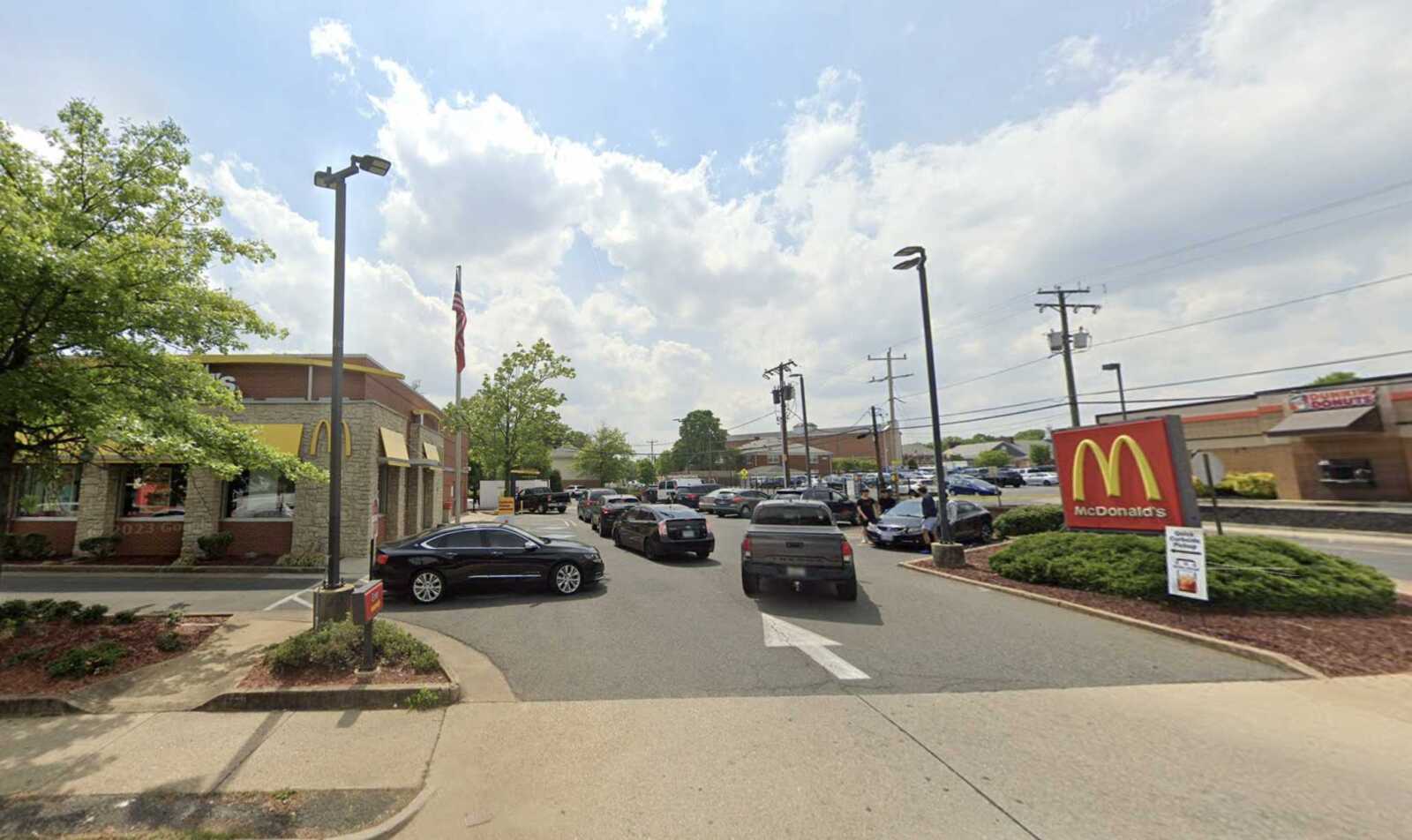
(Updated at 11 a.m.) The McDonald’s on N. Glebe Road in the Buckingham neighborhood is on track to get a second drive-thru lane.
The fast food restaurant at 40 N. Glebe Road plans to add another queuing lane leading up to the existing drive-thru window, increasing how many customers can place orders at the same time. The change is expected to bring shorter lines, cutting down on the amount of cars that back up onto the road, according to a county report.
The Arlington County Board last week signed off on a site plan amendment making this project possible.
“These modifications will alleviate a common occurrence of vehicles queueing in the single drive-through lane and backing up onto North Glebe Road,” the report says.
The change will involve removing four parking spaces and relocating a dumpster. Between 60 and 80 vehicles will be able to move through the drive-thru each hour.
The Board unanimously approved the expansion as a consent calendar item, usually reserved for non-controversial actions.
The Arlington Heights Civic Association and Buckingham Community Civic Association expressed support for the proposal, the county report says. The changes will affect only the drive-thru lanes and will have no impact on the building or the existing drive-thru window.
By contrast, the McDonald’s location at 4834 Langston Blvd faced opposition from county officials in 2020 over its initial plan to add a second drive-thru ordering lane and a recirculation lane. A revised plan, minus the recirculation lane, was approved by the County Board last year. Construction has yet to start on that project.
Photo via Google Maps
The Arlington County Police Department has ramped up efforts to curb public intoxication and other illegal behavior near a Green Valley elementary school.
Despite these efforts, however, some of that behavior persists, according to some community members and ARLnow’s observations.
Police, true to their word, have increased foot patrols and community engagement in Drew Park and John Robinson, Jr. Town Square after the neighborhood heard shots fired and witnessed a shooting over one week in December, among other 2023 incidents.
During an Arlington County Board meeting last Tuesday, County Manager Mark Schwartz said that authorities have “seen a difference in some of the behaviors,” including drinking in public, in the area near Dr. Charles R. Drew Elementary School, and announced other forthcoming measures to curb this activity.
County Board member Matt de Ferranti applauded police on three arrests in connection with the incidents, along with outreach such as conducting security surveys and hosting a visit from Santa and Mrs. Claus.
“The residents who have sat there and said, ‘We want results’ — you have pulled through and so has ACPD,” de Ferranti said.
Around 1 p.m. Friday, however, at least one person on a sidewalk within eyesight of Drew Elementary was visibly drunk. He had an empty beer bottle in his hand and was dancing energetically to music.
From reiterating demands for public restrooms to calling for more investment in area businesses, some community members said Green Valley has a long way to go.
“I will say, the county has been very empathetic to the situation,” said Yordanos Woldai, co-founder of the public safety advocacy group Green Valley Matters. “But I want to judge by the action.”
Striking the right enforcement balance
Among the complexities of intervening in Green Valley is how to do so while being sensitive to the area’s strong hangout culture. The drunk person was dancing next to several other people who sat in lawn chairs outside The Shelton, an affordable housing building.
A middle-aged woman enjoying the warm weather was dismissive when asked whether she has seen any changes in how the county approaches her neighborhood.
“Nope,” she said. “I’m keeping it real with you right now. All they do is talk.”
The woman, who declined to give her name, called the town square’s lack of restrooms, shade and functional water fountains “disrespectful” and scoffed at the suggestion that police have redoubled efforts to keep her community safe.
“If it wasn’t for these older guys that they complain about out here? They look out for us,” she said.
For Schwartz, the focus on Green Valley goes beyond the public nuisance crimes to more serious offenses. The neighborhood is among the “top three or four” in Arlington for firearms offenses and is in the top 12 neighborhoods for a category of offenses that includes weapon law violations, theft, assault and homicide, he noted.
“I’m not going to sit here and tell you that all civic associations are created equal. Some are in more urban areas; some are in less urban areas,” Schwartz said. “But the reason we’re focusing on Green Valley has to do with firearms crimes.”
One approach will be to improve tracking and public reporting of crimes at the neighborhood level. Schwartz announced last week that a new dashboard displaying crime numbers, broken down by civic association, should go live in the near future.
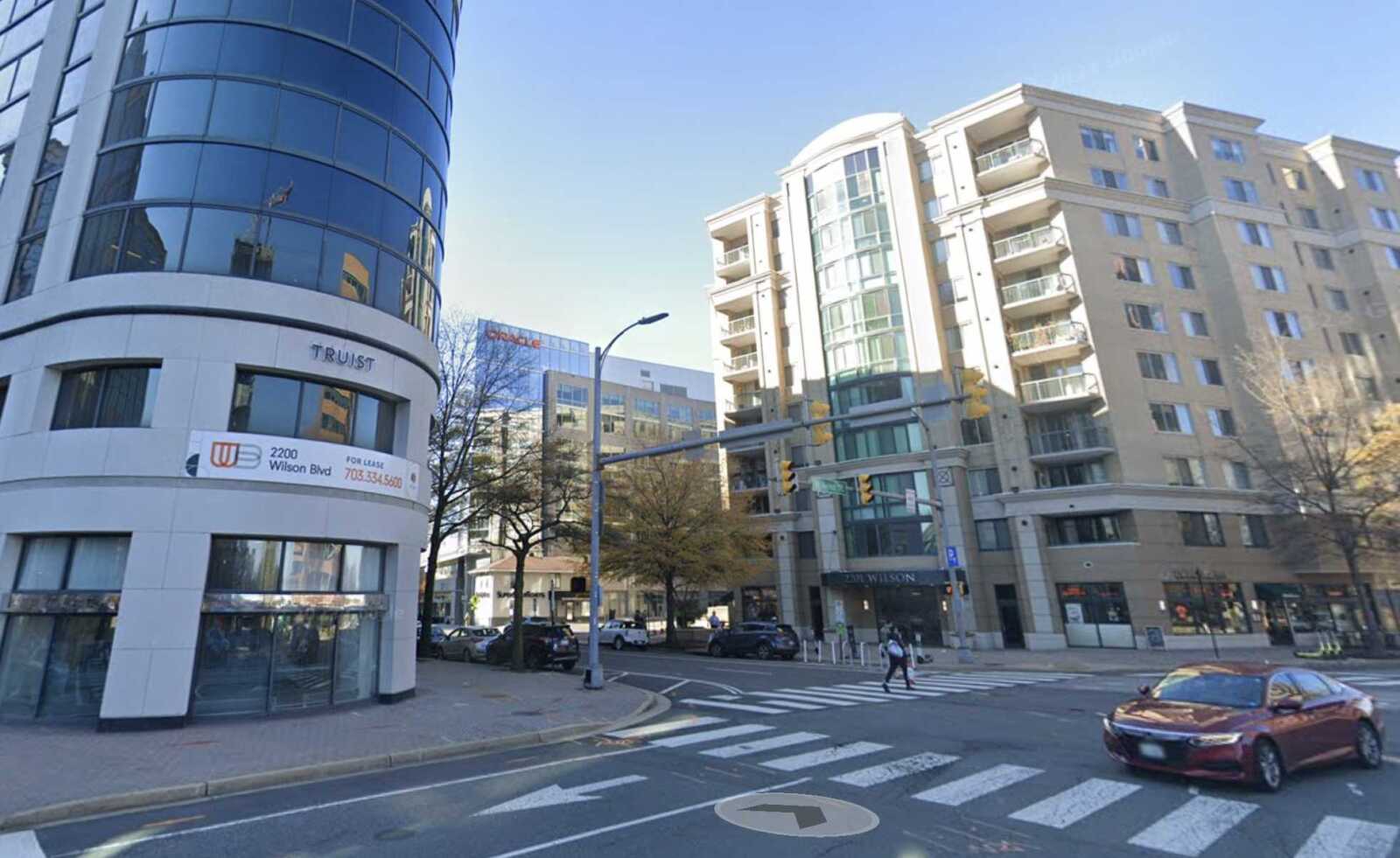
Several measures designed to combat Arlington’s persistently high office vacancy rate are slated for discussion next month.
On the table are expanded opportunities for shared and offsite parking, as well as more lenient parking requirements for fitness centers. Officials are also set to consider whether to allow large media screens for outdoor entertainment in some business districts.
The Arlington County Board is scheduled to vote next month on whether to advertise requests to amend Arlington’s zoning ordinance to make these changes. County Manager Mark Schwartz told the Board last week he hopes that these and other ordinance changes can make it easier for Arlington businesses to get started and grow.
“Very often you’ll have a business that, if it could take advantage of parking very near to it, would be able to move ahead,” he said on Tuesday.
Schwartz noted that fitness centers have particularly strict parking requirements.
Large media screens, meanwhile, could assist with “placemaking” in certain commercial business districts. Currently, it’s an exceptionally arduous process to get large outdoor displays approved.
The county also plans to pursue bigger-picture ordinance changes, Schwartz said. Later this year, the Board is expected to discuss guidance on office-to-apartment conversions as well as potentially simplifying the major and minor site plan amendment process, which landowners must navigate when repurposing or renovating large development projects.
Within the next six months, Board members are also expected to consider plans to facilitate change of use within existing buildings and adopt a more flexible ordinance around signage.
Other possible ordinance changes concern storage uses at office buildings as well as the process for converting underutilized parking spaces.
“We promised we’d be coming to you with sort of a regular rhythm of items, and starting next month we will do that,” Schwartz told officials.
Arlington’s office vacancy rate is currently just over 22%, the county manager said — up from 21.5% in October. Arlington Economic Development predicted in October that this number would continue to rise, as about a quarter of Arlington office space is at risk of sustained vacancies.
The county has scrambled to find uses for its office buildings since the pandemic, passing several zoning changes on a compressed community engagement timeline. Recent adjustments allow urban farms, breweries and podcast studios to move into older office buildings without seeking special permissions.
Despite these efforts, a shrinking commercial base has left Arlington residents shouldering a growing portion of the county’s budget. Historically, the commercial and residential tax base split the budget 50-50 but in recent years, this has shifted to a 55-45 split.
Board member Matt de Ferranti last week called office vacancies “a huge challenge” and praised ongoing efforts by county staff.
“I think it is important to reiterate strong support for the direction we are going in,” he said.
Photo via Google Maps

